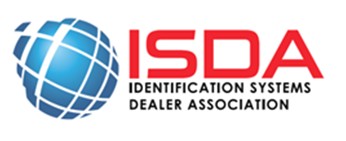 Membership has its privileges, and one such advantage our ISDA membership provides is opportunities to keep up with improvements, trends, and best practices in the ID products industry. While we keep up with changes, concepts and even new products, sometimes the “lingo” of the industry is something our customers get a little bogged down with, and maybe sometimes even confused by it. Fortunately, the library on the ISDA website provides us with this handy glossary of some of the most common ID Card and badge terms. Read through these, and you’ll quickly get an understanding of the various kinds of cards, processes and treatments available and improve your overall knowledge of ID Card terminology.
Membership has its privileges, and one such advantage our ISDA membership provides is opportunities to keep up with improvements, trends, and best practices in the ID products industry. While we keep up with changes, concepts and even new products, sometimes the “lingo” of the industry is something our customers get a little bogged down with, and maybe sometimes even confused by it. Fortunately, the library on the ISDA website provides us with this handy glossary of some of the most common ID Card and badge terms. Read through these, and you’ll quickly get an understanding of the various kinds of cards, processes and treatments available and improve your overall knowledge of ID Card terminology.
Glossary of Common Terms Used in the Industry
Access Control Card–Magnetic or chip cards with or without photo used to enter restricted areas eg. ID badges.
Coercivity–A measure of the strength of changing a magnetic field such as on a magnetic stripe. They are typically expressed as Loco (300) or Hico (greater than 1000)
Contact Card-Any card where information is transferred to a reader via a series of contact points located on the card.
Contactless Card-Smart card which transfers data using radio frequency technology via a transmitter and receiver.
Dye Sublimation Printing- a variety of colors are created via the use of Cyan, Magenta, and Yellow print panels. The print actually penetrates the card allowing one color to fuse with another. Typically used during personalization for items like photos and logos.
EMV-A standard or specification created by Mastercard. Europay and Visa for smart financial cards.
Embossing-Characters created by cold forming the plastic of the card using a punch and die.
Encoding-Electronic information on to a magnetic stripe.
Encryption-Transferring information based on a key to make it intelligible to unauthorized parties.
GSM-Global System for Mobile Communication, a widely used digital mobile phone standard. It entails the use of a smart chip (SIM) to authorize use of phone
Gift Card-A retail prepaid card.
Hologram-A flat optical image which looks three-dimensional to the naked eye.
ID Card-Typically a card that identifies the holder and the organization the holder represents. This identification can be visual (picture, printing), electronic (encoding, smart card) or a combination as in barcodes.
ISO-International Standards Organization, central body for formation and dissemination of industry standards for all national standards bodies.
Lamination-The outer layers of a plastic card. Sometimes added as part of the personalization process for durability and security.
Loyalty Card-A frequent user card offering promotional benefits.
Magnetic Stripe-The strip of magnetic recording material on an ID card.
Oersted-The unit of magnetic coercive force used to define the ability to change or encode the information on a magnetic stripe.
Off-line…A transaction via paper or reader not connected to a central system. This is used many times in countries that do not have a significant communication infrastructure. The security of a Smart Card becomes important in this transaction.
On-line-A transaction on a terminal permanently connected to a network that is on-line to the card account. Typical in countries with an advanced communication infrastructure.
Optical Card-Card with information recorded on an optical memory stripe, similar to compact disks.
Personalization-Printing, encoding and programming a card with data specific to an individual cardholder.
Prepaid Card-A card paid for at point of sale permitting the holder to buy goods and services up to the prepaid value.
Promotional Card-A card offering special benefits to users eg, discount card.
Proximity Card–A contactless card whose presence and data can be sensed by an interface device not in physical contact with the card.
PVC-Polyvinyl chloride, the most widely used plastic material for ID cards.
Radio Frequency Card (RFID)–A proximity card in which the coupling between the card and the interface device is by radio frequency.
Signature Panel-The area of an ID card where the cardholder enters a signature.
SIM-Subscriber Identification Module: the smart card necessary for the operation of GSM phones.
Skimming-Copying the magnetic stripe encoding from one card to another.
Smart Card-(aka Chip Card, IC Card)- A plastic credit card sized card that contains one or more semiconductor chips. In the capability category, there are three types:
**Memory Card…smart card that stores and retrieves serial “streams” of data that are sent to or received from the semiconductor chip.
**Protected Memory Card…smart card that requires a secret code or PIN number to be entered before the data can be sent to or received from the semiconductor chip.
**Microprocessor Card…contains a microprocessor chip with a microcode that defines a command structure, a data file structure and a security structure in the card.
Stored Value Card (aka cash card, electronic purse, prepaid card)-A financial card that is loaded with a certain amount of money with each purchase amount deducted from the card.
Transit Card…Magnetic or chip card used for transportation services eg. subway card.
Telecom Card…Magnetic or chip card used for telephone services eg. GSM card, prepaid card.
Thermal Transfer Printing– typically used for text or barcode printing. It is typically black but can be a variety of mono colors. They cannot be combined as in dye sub and therefore the last color printed is shown.
Credit: ISDA
